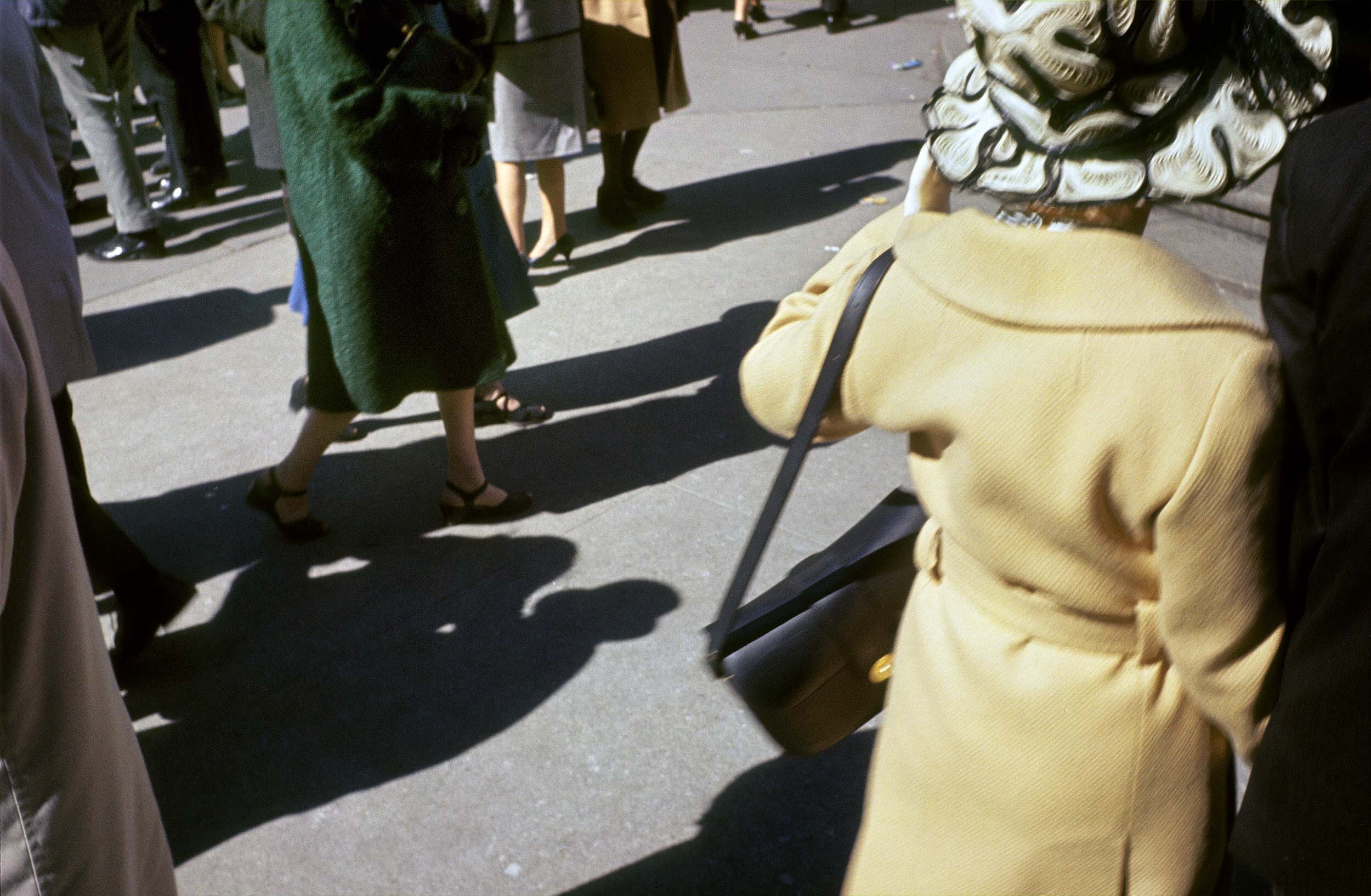Easter Parade (1967)
Easter Parade
Extraits de la série : 1967
Le deuxième essai «pour changer de style» s’est imposé à Alain Sabatier lors de son second voyage à New York, après qu’il ait projeté ses diaporamas au MoMa dans une séance publique intitulée Recent Color.
Le jour de Pâques, la célèbre Easter Parade sur la 5e Avenue lui offre l’opportunité de continuer sa démarche de désimplication du regard entreprise avec Ersatz. La distance qui sépare les images de la série Manhattan de celles d’Easter Parade est significative de la rupture esthétique produite par cet «essai». Il n’y a plus aucun lien évident avec l’angle encore documentaire donné sur la ville dans Manhattan, ni avec les démarches photographiques en vigueur à l’époque, comme la street photography américaine dont l’approche était faite en noir et blanc.
Réalisées avec l’appareil photographique tenu à bout de bras, ces images deviennent le prolongement direct du corps, de la sensation d’immersion ressentie au contact de la ville. Le regard n’est plus matérialisé en un « point de vue ». La responsabilité de l’image semble confiée au corps comme entité vibratoire qui précède l’acte de penser.
Projections publiques
Cannes, Rencontres Internationales du Film pour la Jeunesse, 1969
Nice, Galerie d’Art Contemporain des Musées, 1979
Nice, Théâtre de l’Artistique, 1981
The idea of the second experiment “in changing style” occurred to Alain Sabatier during his second visit to New York, after he had given a public presentation of his slide shows, entitled Recent Color, at the MoMa.
The famous Easter Parade on Fifth Avenue on Easter Day gave him an opportunity to work further on increasing the distance between the photographer’s view and the picture, an approach that he had used in Ersatz. The gap between the pictures in the Manhattan series and those in Easter Parade is a clear indication of the aesthetic break produced by this “experiment.” There is no longer any obvious link with the documentary view of the city evident in Manhattan, or with photographic approaches in vogue at the time, for example in American black and white street photography.
These pictures were taken with the camera held at arm’s length and thus become a direct extension of the human body, a prolongation of the sense of being plunged into the city. The photographer’s eye no longer embodies a “point of view.” The responsibility for the pictures seems to be conferred on the body as a vibratory entity preceding the act of thinking.
Alain Sabatier sur le toit du MoMA, 1967 © Patricia Walker










